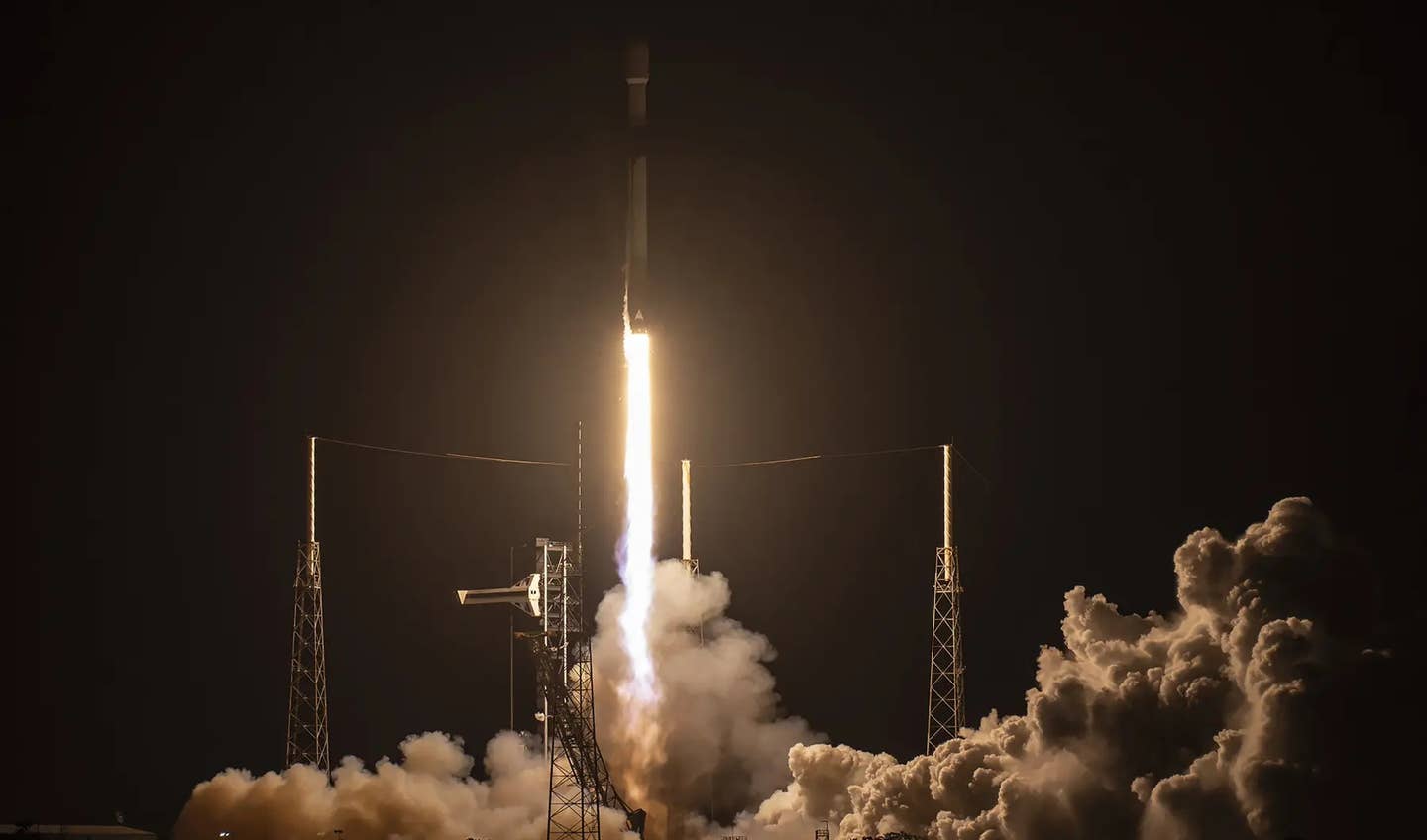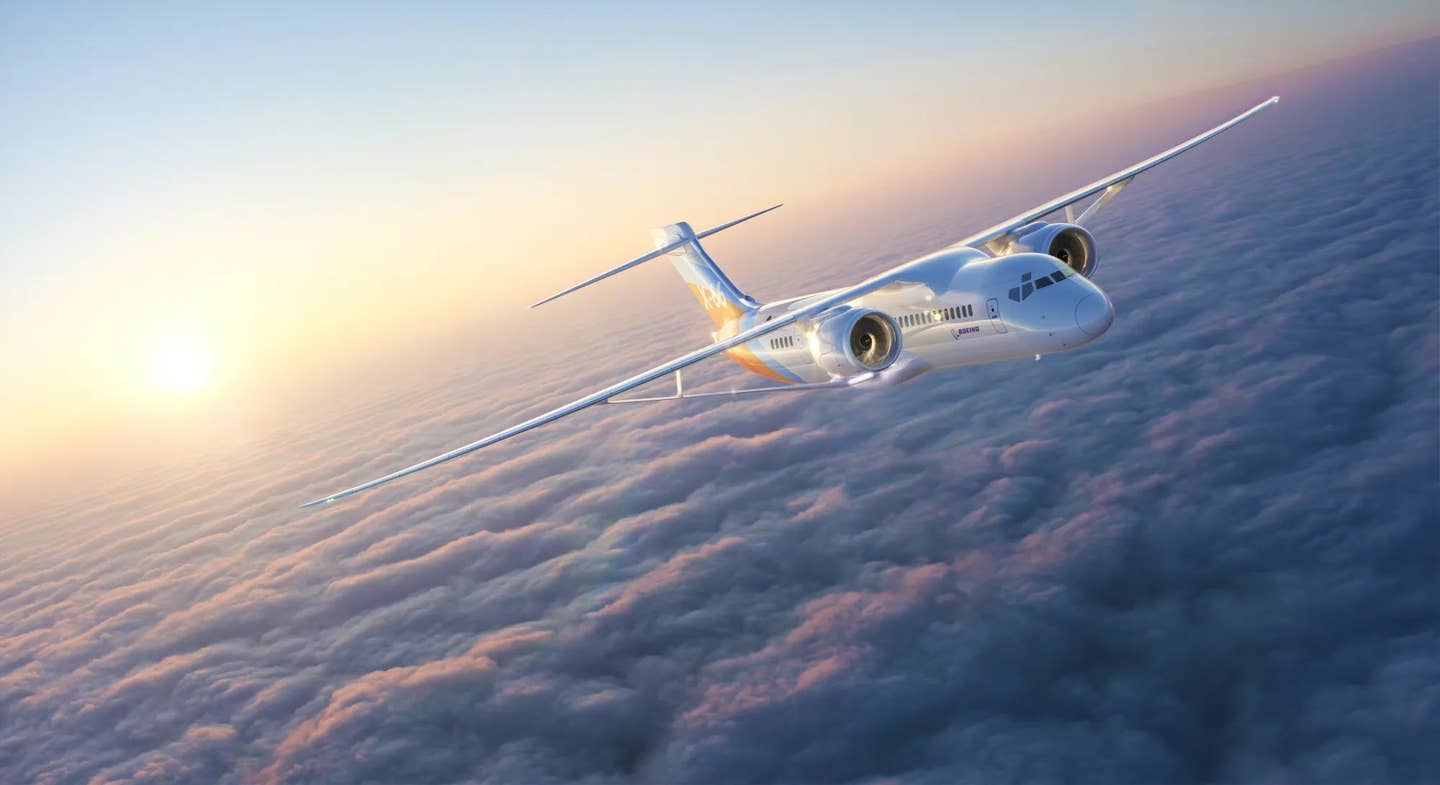
The New York Times has revealed thrilling details about a secret Pentagon program established in 2007 to investigate UFO sightings. Wikimedia Commons
On the front page of its Sunday edition, the New York Times ran an attention-grabbing story about a secret Pentagon program established in 2007 to investigate UFO sightings. The key items of intrigue from the companion article posted on the Times' website on Saturday are videos showing an encounter in 2004 by two Navy F/A-18 Super Hornets over the Pacific Ocean with an unknown object that seems to defy the known laws of aerodynamics.
The story about the strange encounter has long circulated on the Internet, according to UFO enthusiasts, but this was the first time the government had confirmed that the details of the shocking sightings by the Navy airmen are, in fact, 100 percent accurate.
After studying the phenomena for about five years and generating "reams of paperwork" but little else, the government came to an unsatisfying conclusion about the "beyond next-generation" technology spotted by its airmen: Nobody seems to understand what they are looking at in the videos. At a loss to explain what the pilots recorded with their FLIR cameras over the Pacific about 100 miles off the coast of San Diego after deploying off the USS Nimitz aircraft carrier on the morning of November 17, 2004, funding for the program dried up in 2012.
What's so unusual about the Pentagon's acknowledgement of its UFO research effort – called the Advanced Aerospace Threat Identification Program and originally funded largely at the request of former Nevada Sen. Harry Reid, who has long had an interest in space phenomena – is that it marks the first time the public has been shown bona fide physical evidence of a real encounter with what the military calls "unidentified aerial phenomena." It wasn't a trick of light, a hallucination or a hoax. What the pilots recorded with their onboard sensor equipment, as well as what was tracked by the sophisticated AN/SPY-1 radar aboard the Ticonderoga-class guided missile cruiser USS Princeton, really existed in the skies over the Pacific Ocean on that bright blue Sunday morning.
Here's what they witnessed, according to the two Super Hornet pilots, Cmdr. David Fravor and Lt. Cmdr. Jim Slaight. They were on a routine training mission in their F/A-18s that day when they were asked by the Princeton to investigate an unidentified airborne contact. Unknown to either of the pilots, for days the Princeton had been tracking multiple returns, always over the same lat/long spot, descending from somewhere above 80,000 feet down to 20,000 feet to a hover in a matter of seconds. The Princeton had been using its SPY-1 radar to track the objects while they descended, hovered and then zipped away at speeds, turn rates and accelerations that seemed unfathomable.
When the operations officer aboard the Princeton contacted the pilots, he asked what weapons they carried. None, was the answer, as the airmen hadn't been expecting to encounter any hostiles off the coast of San Diego that morning.
When they arrived over the spot where the Princeton was painting the aerial anomalies, at first the Super Hornet pilots saw nothing. Then Fravor noticed that a portion of the glassy smooth water below was roiling, breaking over something submerged and causing the sea to churn. Then, suddenly, he saw the object. Hovering 50 feet above the churning area, according to a Times interview of the airmen, was some sort of craft – white and oblong and about 45 feet long. In another recounting on fightersweep.com, Fravor described the craft's appearance as that of a large white Tic-Tac. The craft was jumping around erratically, staying over the wave disturbance but not moving in any specific direction, Fravor said.
He decided to make a circular descent to get a closer look. His intention was to pass the object at close distance and about 350 knots, but as he got closer he noticed that the craft had oriented one of its “skinny ends” toward him, as if, in his words, “It had just noticed us” and it was now pointing at them. Fravor abandoned his slow circular descent and headed straight for the object. As he got closer to the object it began ascending toward him, almost as if it were coming to meet him halfway, he said.
Then it was gone in an instant. "It accelerated like nothing I've ever seen," he told the Times.
The first call from the Princeton after the object had peeled away at multi-mach speed was "picture clean." A few moments later, however, the Princeton came back with surprising information. "Sir, you won't believe it," the radio operator said. "That thing is at your cap point."
The Princeton had picked up the object hovering at 24,000 feet at the assigned lat/long Fravor and the other Super Hornet had used earlier during training as their orbiting point.
"We were at least 40 miles away, and in less than a minute this thing was already arrived at our cap point," Fravor said in the interview with the Times. By the time the Super Hornets arrived at the rendezvous point, the object had vanished.
“I have no idea what I saw,” Fravor responded to a fellow pilot after the flight when asked about it. “It had no plumes, wings or rotors and outran our F-18s.”
But, he added, “I want to fly one.”
In his debrief, Fravor stated the object had initially been hovering over the water like a Harrier jet. He described it as uniformly white, having a discernible midline horizontal axis (like an aircraft fuselage) but having no visible windows, nacelles, wings or propulsion systems.
So what was it? We don’t know, and maybe we never will. But thanks to the Pentagon, we now know it actually existed, and we have the video evidence to prove it.
Shortly after the Times report appeared, Sen. Reid tweeted, "The truth is out there. Seriously."

Sign-up for newsletters & special offers!
Get the latest FLYING stories & special offers delivered directly to your inbox






